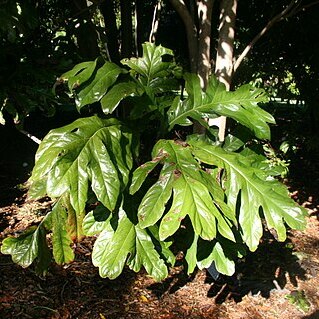An evergreen tree. It grows up to 20-30 m high. It spreads 5-8 m wide. The leaves are simple and 9-35 cm long. They can be entire or have teeth along the edge. The young leaves have lobes and mature leaves are shiny on the upper side. Flowers are small and congested. They occur in slender racemes which droop. The fruit are 4 cm long by 3.5 cm wide. They are blue. They hang on stalks. They can be on the end of twigs or hang from the trunk. There is one seed inside. The kernel of the seed is edible.


